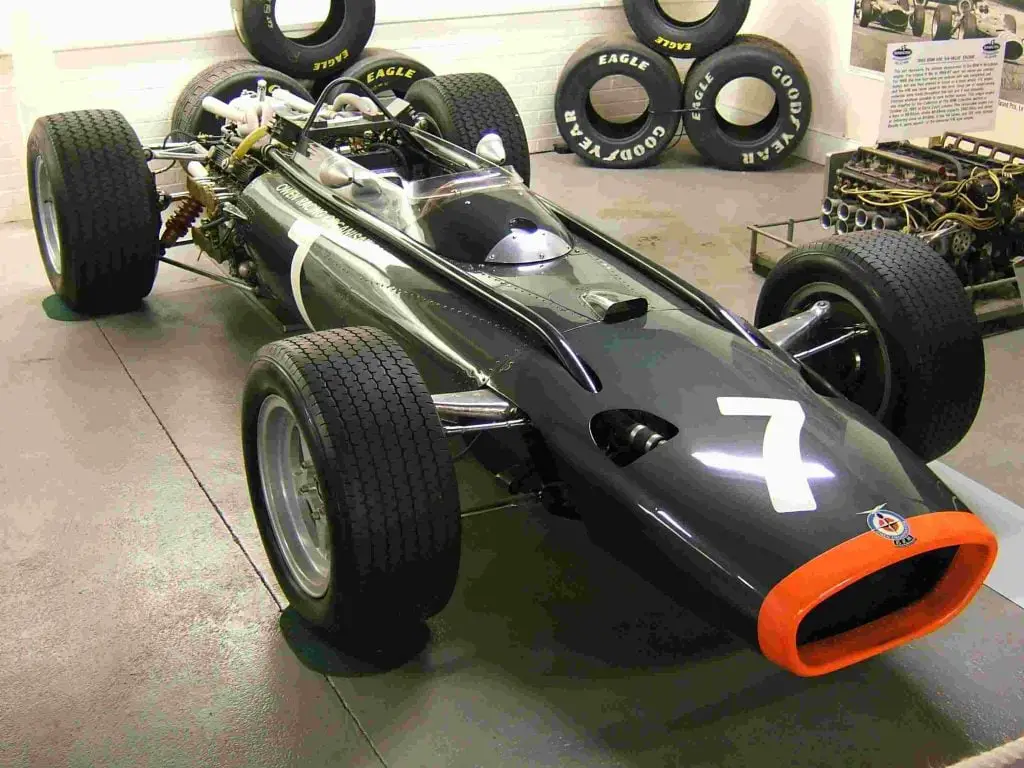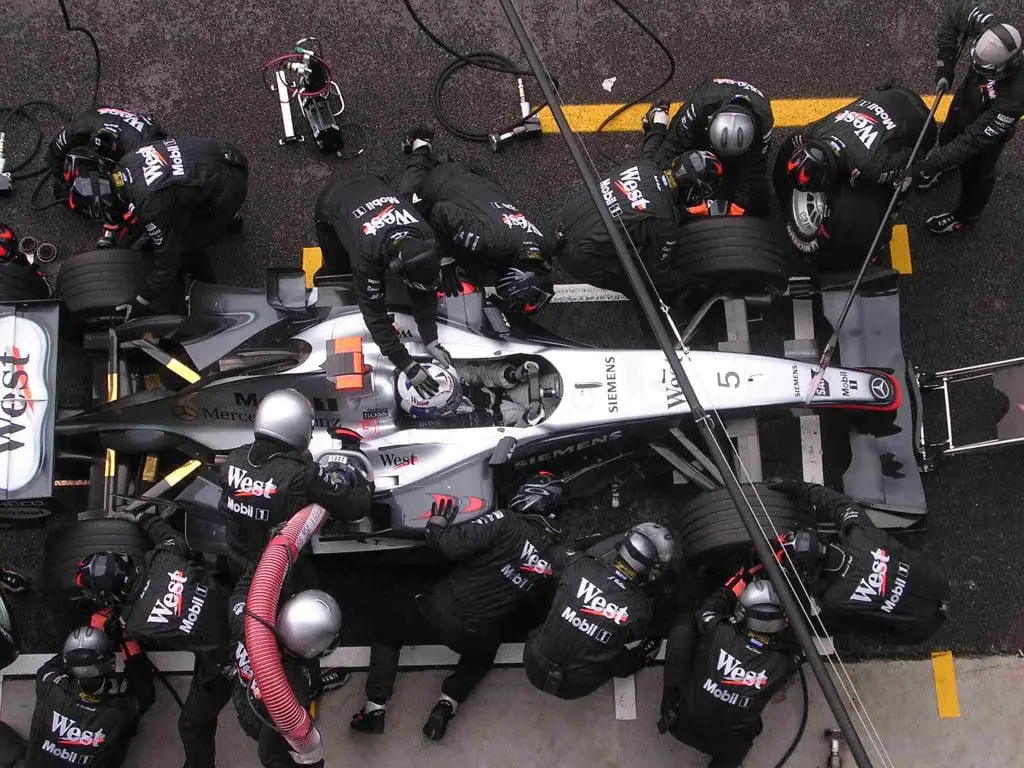Last Updated on September 23, 2023 by Pittalks
When it comes to F1 race cars, you may think that it’s all about speed. However, there are many regulations to ensure that f1 car manufacturers put their design beyond the limit and satisfy these purposes:
- Power
- Safety
- Cost
The restrictions of the F1 engine include:
- 4 stroke 90° V6
- Crankshaft rotational speed: less than 15,000 RPM (revolution per minute)
- Engine capacity must be 1,6 liter (+0/-10cc)
With all of those restrictions, the F1 cars in 2021 have slightly more than 1000 HP. To put it into perspective, your regular car has about 180 and 200 HP, and supercars usually have more than 500 HP. The gap is just insane!
For one example, the Mercedes W11, the fastest F1 car ever, has 1,025 HP. In 2020, this car set a record for the fastest average lap at Monza, with an average speed of 264.362km/h (164.267mph).
In the past, without that many regulations, F1 cars can achieve a significantly higher number than that. Specifically, in 1986, BMW literally designed a monster with 1,350HP – Benetton B186. And that remains the most powerful F1 car of all time.
Anyway, let’s break down the 1000 HP of nowadays F1 cars to see why this number is not that high. Besides, this article also explains how F1 cars have become “less powerful” but faster over time.
Read next: Are F1 Cars AWD?
F1 engine horsepower breakdown
From 2014, the V6 turbo-hybrid era, F1 cars use 2 sources of power:
- The combustion V6 engine (of course)
- Energy recovery system (ERS)
But what is the ERS?
F1 cars lose 2 kinds of energy when running, heat (via turbochargers) and kinetic (via breaking system). Since 2014, engineers have found a way to harvest the lost energy by using 2 motors:
- MGU-K (Motor Generator Unit – Kinetic)
- MGU-H (Motor Generated Unit – Heat)
The generated energy will be stored at the Energy Store (ES). And then drivers can use this extra power at the right moment.
ERS is restricted to 163 HP for 33.3 seconds in one lap. So a 1000 HP F1 car, the engine itself contributes at least 837 HP.
Read next: What is DRS in F1?
Why F1 engines in the past are so powerful
Back in the day, there are not as many regulations as nowadays. So, the engineers made the engines with higher capacity (3L, 3.5L), much higher revolution limit (18,000 or 19,000+ RPM). Moreover, different engine configurations have been used. From V8, V10, flat 12, to the craziest engine of all time, the H16.

Without the proper restrictions, people just want to make it more powerful without bothering anything else.
The turbo era of 1986 definitely had the most powerful F1 cars we’ve known. At the time, all cars used turbo engines and they produce an average power of 1200 HP. Standing out from the rest is the beast – Benetton B186 with 1,350HP.
Do not misunderstand. More power does not always mean better performance.
B186 is way powerful that the driver reported wheelspin while running at max speed 345 km/h. As it was too unstable and dangerous, FIA decided to limit the power of the turbos. Eventually, it got banned in 1989. And then in 2014, turbo engines came back. But this time, they are hybrid.
Read next: Are F1 Cars Manual?
Who produces the most powerful F1 engine?
This is a tough question. Let’s see who has the most win throughout the F1 history. Note that these are just numbers. Having a powerful engine is not the only factor that makes a win in F1 races. There are many other factors that affect the outcome of a race, such as drivers, aerodynamic, and other components in the cars.
With that in mind, the table below is a good general picture to answer the question.
| Engine manufacturer | Wins |
| Ferrari | 239 |
| Mercedes | 205 |
| Ford | 176 |
| Renault | 168 |
| Honda | 84 |
Why is 15,000 RPM the limit?
Generally, more RPM (revolutions per minute) often means more horsepower. But why does the FIA limit the number?
First thing first, it’s kind of nonsense when 15,000 is the limited RPM. Nowadays F1 drivers never rev the engine up to that number. This is because the F1 fuel flow rate limit is just 100 kg/h, making high revving not as powerful as it should be. As a matter of fact, high revving with this fuel flow rate limit will decrease the horsepower, not increase.
Back in 2006, there was no fuel flow rate regulation. And cars with the highest RPM in the F1 history could be found here. The V8 of Cosworth could achieve just over 20,000 RPM, resulting in a high-pitch engine sound, quite fascinating for some people.
But then in 2017, the 19,000 RPM limit was set as high RPM engines come with many different problems. They are too unstable that they can only be used for a race or two. So, the RPM limit aims to reduce the cost and make sure F1 engines are able to run well for multiple races.
You can watch the video below to understand why high RPM engines are so complicated.
F1 cars are so powerful, they can beat any other cars
To be clear, F1 cars do not have the highest max speed on a straight line or the greatest acceleration. But when it comes to taking corners at 150mph, F1 is the king.
The video below will show you the massive difference between an F1 car, a supercar, and a motor GP. Of course, the F1 car just destroyed them all.
How much hp does an f1 car have without any rules
Rules made by the FIA are meant for many good reasons. But rules are no fun, right?
Just imagine an ultimate F1 without any limitation. How much horsepower could it have? How fast could it be? Let’s find out!
The first major factor that limits F1 cars’ power is the fuel flow rate rule. Under the latest regulations, fuel flow can’t exceed 100 kg/h. Without this rule, the engine could rev at a much higher RPM. Again, as we assume, there was no rule about RPM.
Keep reading: Why Don’t F1 Cars Have A Clutch Pedal?
One thing you should know, engines with high RPM (something like 20,000) are extremely complicated and expensive to make. Besides, they don’t last long. Anyway, we assume the engine of our ultimate F1 is a V10 with “only” 20,000 RPM.
Combine this with an ERS system, the ultimate F1 could easily reach more than 1500 HP.
Besides, the driver’s seat would not be the same. To lower the gravity center, the driver has to lie flat rather than sit upright. Instead of having 4 wheels, the car would have 6 or even 8. More wheels mean not only better traction but also a lower center of gravity.
I can’t give you a specific number of how fast this thing could go. However, its peak is definitely faster than what an astronaut can handle. This beast could generate more G-force than any other f1 car, which would be very difficult for the driver to stay conscious.
Read next: F1 Pit Stops 101
Conclusion
We hope you enjoyed this article on F1 horsepower. If you have any questions or want to know more about the ins and outs of Formula One racing, don’t hesitate to leave a comment below! As we upload new articles every week, there are plenty of other great resources for understanding what goes into being an F1 driver.
Stay tuned next time when we answer all your questions about F1 pit stops – but until then enjoy some of our other posts that may interest you.
You may also like: F1 vs NASCAR
Related article

F1 pit stops 101 | All rules simply explained
References:



News Sites for Article post
frenchnewstoday.com
germaynewstoday.com
guardiannewstoday.com
headlinesworldnews.com
huffingtonposttoday.com
irishnewstoday.com
Dont hasitate to contact us